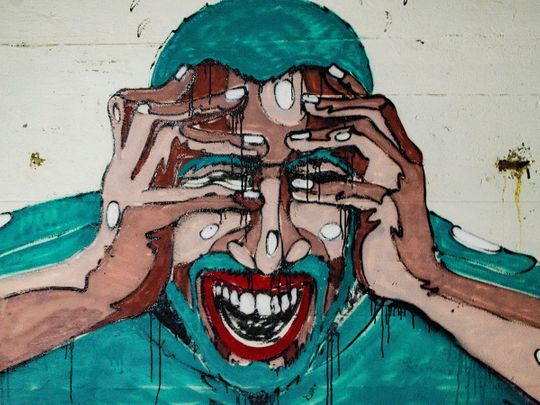
Humans have been using the fight or flight response to stress for centuries. But did you know there are two other things we are likely to do in these situations?
Click start to play today’s Spell It, where ‘flee’ is one of the words you can create with the letters provided.
When faced with traumatic events, psychologists recognise four ‘Fs’ – flight, fight, freeze and fawn. Our brain selects one of these actions, based on what it believes will help us survive the current scenario.
According to US-based health counselling website Mind Body Green, these kinds of responses are not reserved for big events, like war, death or disasters. Even smaller catastrophes in our daily lives – called micro-traumas – can affect us profoundly. For instance, a betrayal of trust, or a stressful, abusive work environment can cause people to generate a trauma response.
Here are the four Fs and what we can do to get out of the moment, and back in control of our bodies:
1. Fight response
As an act of self-preservation, the fight response causes people to deal with conflict through anger and aggression. By trying to maintain power over the threat, the person tries to gain control of the situation. But the fight response doesn’t have to look like a physical altercation or yelling – it can also be the experience of balling your hands into fists, becoming argumentative, or feeling your jaw tighten. According to US-based medical news website Healthline, one way to get out of this response is by taking a moment to slow down, through deep breathing and mindfulness, for instance. By calming down, your body stops trying to get physical. Doing some stretching or taking deep breaths activates the parasympathetic system, releases anxiety and lets you get back into control.
2. Flight response
This is avoidant behaviour, which causes people to avoid the conflict entirely in an effort to escape any threats. With a flight response, you would avoid interaction with others or head to the exit when things get tough. According to the Mind Body Green website, the best way to cope in such situations is to do something tactile, or something that creates a visceral reaction within the body. Eating crunchy food or drinking a warm beverage, for instance, pulls you back in control of your reactions.
3. Freeze response
When you freeze, you feel completely immobile and find yourself spacing out, as if you are detached from reality. The reaction can range from being at a loss for words, to spacing out, to feeling physically or emotionally numb, to sleeping. The way to get back in control is to scan immediate surroundings for a certain object, as a grounding exercise. For instance, you could look around for five blue objects – when you spot one, you say its name out loud (eg: ‘blue hoodie’), and take a slow, deep breath. Repeat this with each object, and it will have the conclusion of you returning to the present moment and environment.
4. Fawn response
This is a people-pleasing response to such an extent that you forget yourself entirely, in an effort to pacify someone else. The way to counteract this behaviour is by being extra compassionate with yourself so that you begin to separate your own feelings from those of others. Adding buffering time in responses also helps people learn how to set up boundaries and be more aware.
What kind of reaction do you resort to, in extremely stressful situations? Play today’s Spell It and tell us at games@gulfnews.com.







